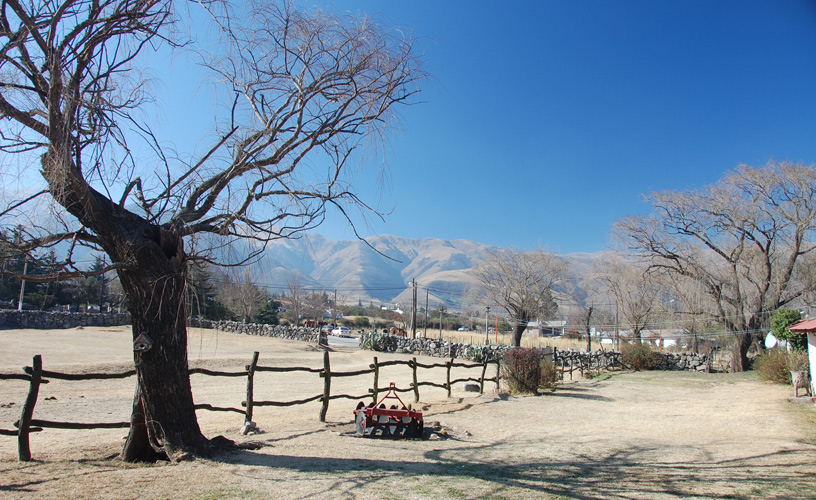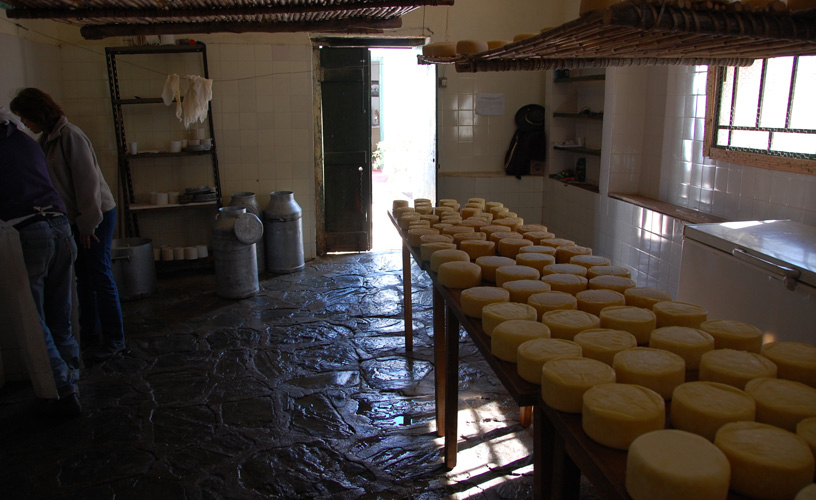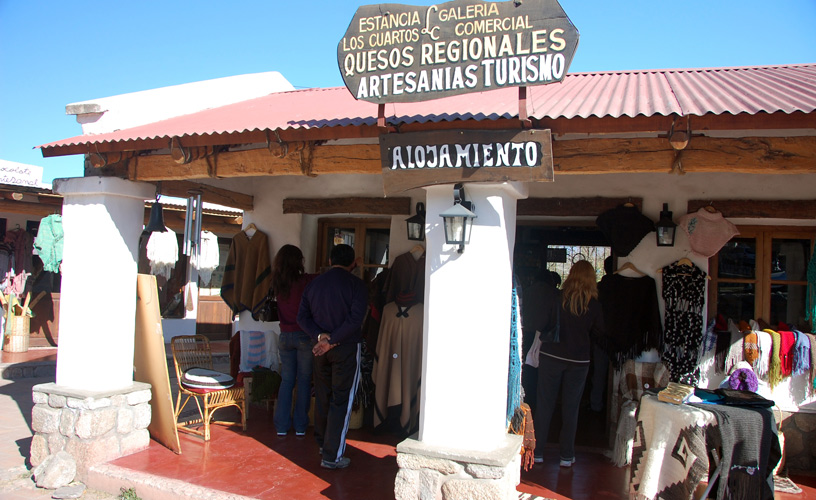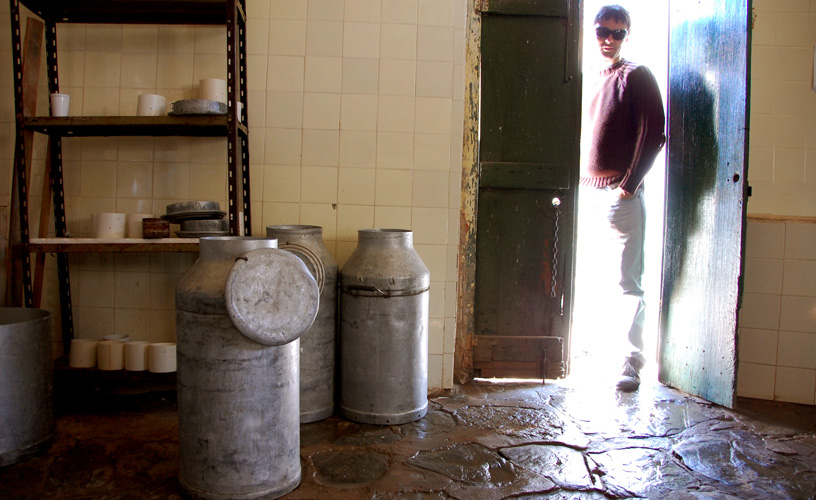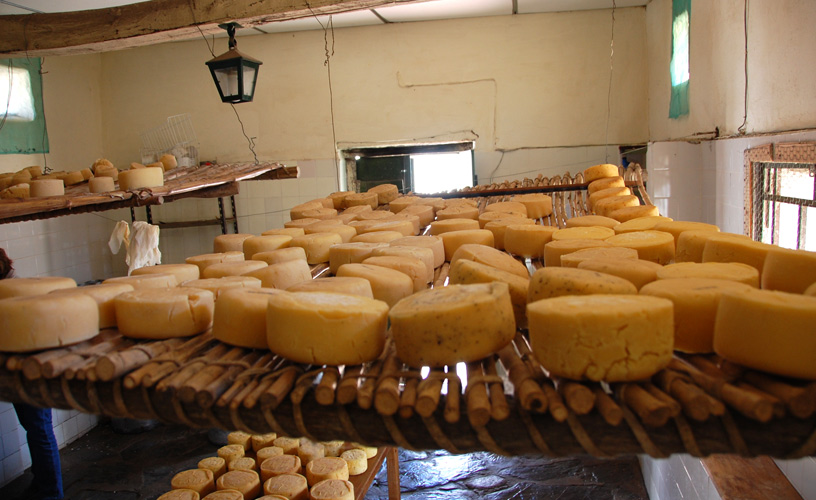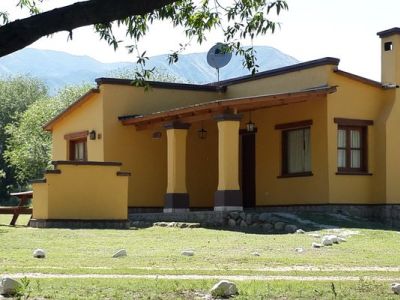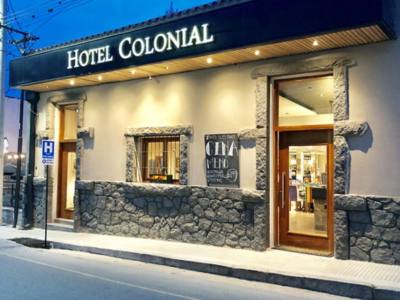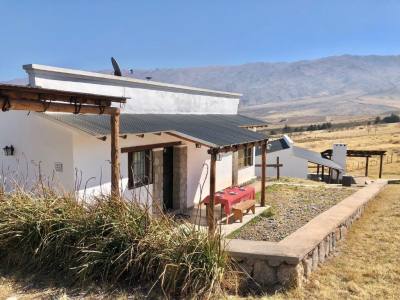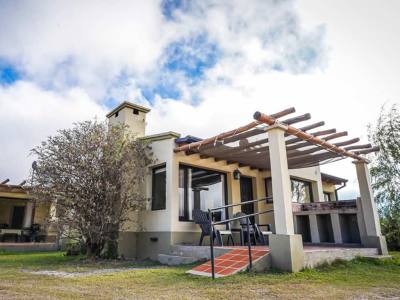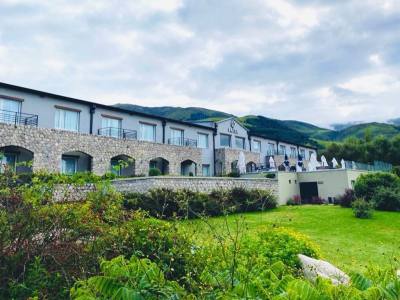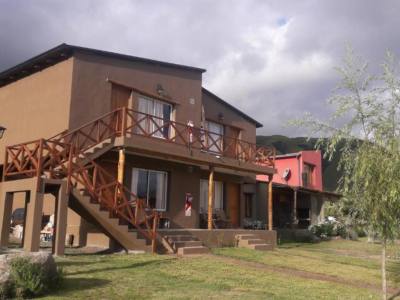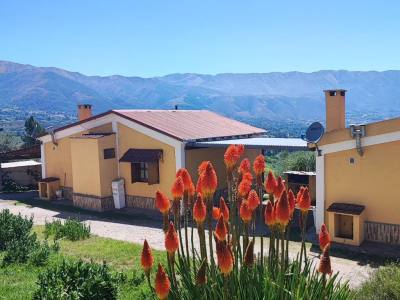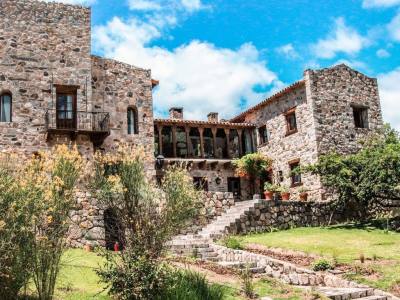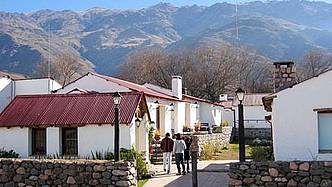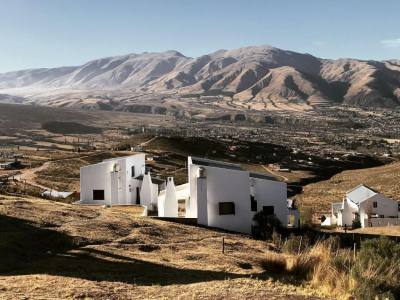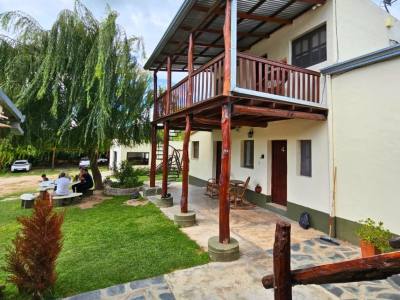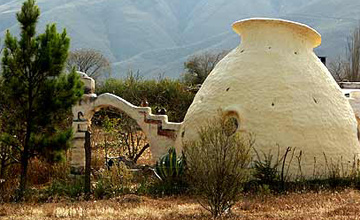It was an excellent idea to learn how a simple technique and lots of patience can turn cow milk into delicious craft cheese.
Craft cheese is part of the traditional cuisine from Tucumán. Tafí has its National Cheese Festival every year in February. We were told that the recipes used were brought along by the Jesuits, so we resolved to accept the invitation to see the process to make cheese in a local venue.
We were welcomed by two llamas who anticipated the quietness of the environment. The two-hundred-year-old construction included a long house with gabled roof and a gallery to protect the bedrooms from the sunshine and the rain. It was surrounded by the quietness of a green field reminiscent of the old days.
We continued up to the back of the large building. It was a ventilated and impeccably clean area. We were welcomed by Casimiro, the technician who would tell us about the process of making cheese. He talked to us very politely as he stirred the curd.
Patience and Dedication
Everything starts at the moment of milking the cows. In this case, they belong to the owners of the estancia. It is necessary to keep temperature at steady 30º at the time of milking. This lets the sugar and the lactose become sour and the caseine will separate the solid constituent of the whey.
Thus, the curd is obtained. It is mixed and left to rest for half an hour. Afterwards, it is kneaded as the whey continues to be removed. Then salt and spices are added to cheese that will become flavored cheese (pepper, oregano). Others will take no additives.
Molds are made of stainless steel and before putting the preparation into them, a piece of cheesecloth is placed inside to help the mold be taken away more easily when the cheese is ready. A wooden lid is placed on top of the mold to act as a press that is adjusted twice or three times a day so that the excess of humidity is removed from the cheese. This process takes 24 hours.
Casimiro explained that we had taken part in the making of compact cheese. The technique to make soft cheese is different, especially regarding the duration of each stage. The cheese is removed from the mold and is sealed with the estancia stamp, which in this case is a “C”, and then it is aged. There are no additives on the outer part of the cheese. It is set to rest during two days on a flat surface until the rind appears.
In the Dim Light
The next stage is aging. The cheese is placed on some high racks made of cane very near the ceiling. It is not necessary to turn them over because they are ventilated from both sides. It is essential that the aging period in this room should include humidity, temperature and light controls. Then maturation takes place and the cheese reaches the right point for consumption.
The cheese remains there until it is taken to the store located in front of the estancia.
We asked Casimiro about the care that should be taken as far as this kind of cheese is concerned once we buy it and he told us that it may be kept at room temperature or in the refrigerator, but that we should avoid freezing it.
We bade farewell and went straight to the store to buy some pieces of cheese from Tafí and enjoy them in the knowledge of how they were produced. Furthermore, our tour also let us see part of the wonders of this estancia, which offers accommodation, lunch and typical local breakfast services.
Mónica Pons
Eduardo Epifanio
